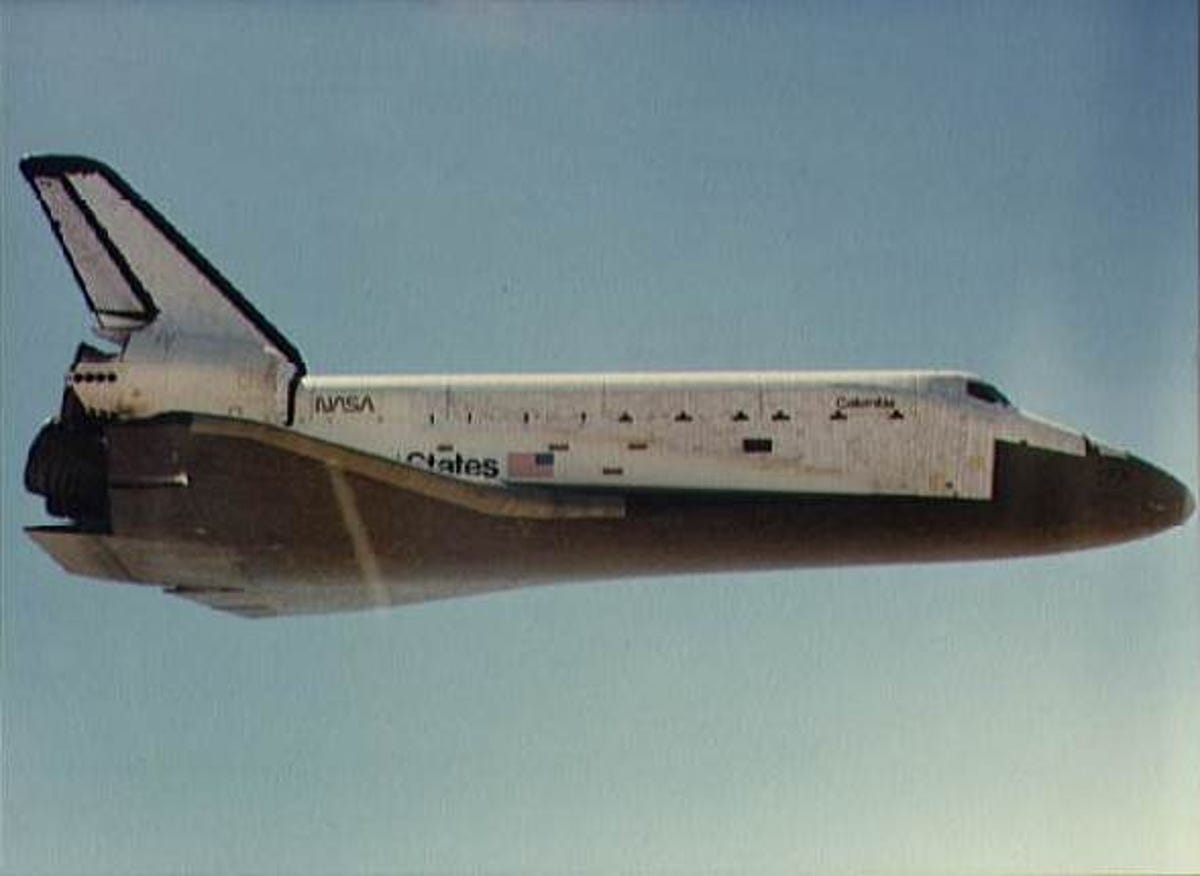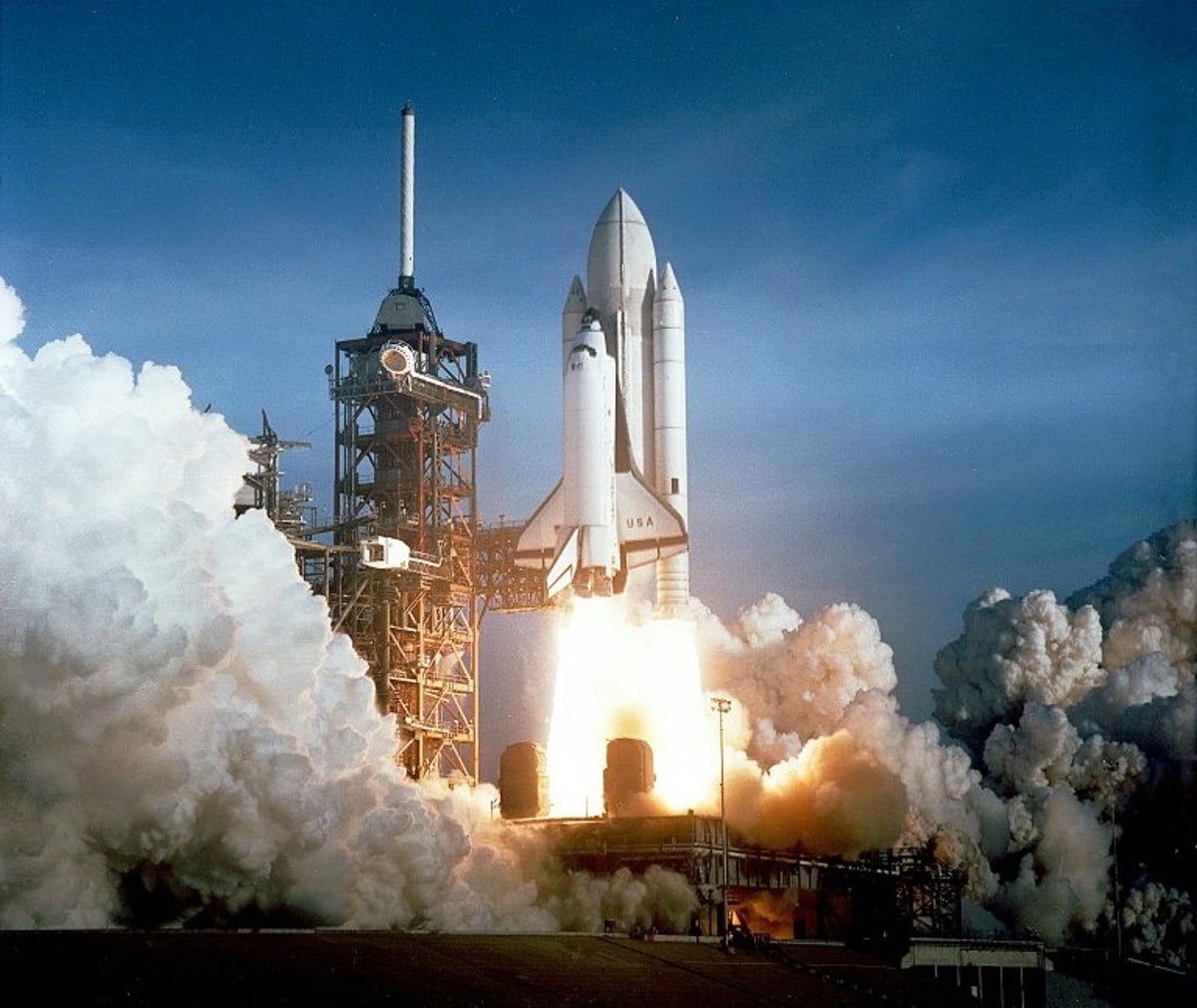When the space shuttle was new (photos)
Later this year, NASA will retire its fleet of shuttles. The first of the space planes to enter orbit, the Columbia, did so 29 years ago Monday.

Columbia in flight
After the first few, anniversaries typically get the most attention in increments of 5 or 10--the 10th, the 20th, the 25th, and so on. But this month, it's a 29th anniversary that stands out, and for bittersweet reasons. It was in April 1981 that NASA carried out the first-ever orbital flight of the space shuttle. And as things stand now, NASA's small fleet of shuttles will be retired after a final mission in September of this year.
This image shows that first orbiter, the Columbia, on its return flight to Earth with its two-man crew on April 14, 1981, headed toward the dry lake bed at Edwards Air Force Base in California. The shuttle's dimensions: 122 feet long and 57 feet high, with a wingspan of 78 feet.
John Young and Robert Crippen
In their official portrait, astronauts John Young, the shuttle commander (left), and Robert Crippen, the pilot, are all smiles. And with good reason: Their mission, STS-1, was a historic moment in the U.S. space program. Their spacecraft was unlike anything NASA had sent into orbit in the earlier era of the Mercury, Gemini, and Apollo programs. The space shuttle was the world's first reusable spacecraft, and it wasn't just shaped like an airplane--it could land like one, too.
The togs that Young and Crippen are wearing here are their ejection escape suits.
Emergency egress system
Columbia on launch pad

Lift-off
Rocket boosters separate
External tank
Mission control, rollout
Mission control, launch day
Payload bay
The shuttle introduced a new capability to the space program--the payload bay, opening wide to the vacuum of space. The bay measures 60 feet long (about half the overall length of the shuttle) and has a diameter of 15 feet.
The Columbia's main payload on this inaugural flight was a Development Flight Instrumentation package, located in the boxlike structures at bottom left. The contents included sensors and other devices used to record the details of the spacecraft's performance. NASA says that the glare at top left, by the tail, is a window reflection; that window would be one of the rear-facing ones on the flight deck.
John Young in commander's seat
Young and notebook
Young, shaving
Crippen at mealtime
Pilot Robert Crippen sits down for a meal. According to the press kit (PDF) for the STS-1 mission, the first meal to be consumed in the Columbia on launch day would have been frankfurters (thermostabilized), turkey tetrazzini (rehydratable), bread (irradiated, "natural form"), bananas (freeze-dried), almond crunch bar (natural form), and apple drink (rehydratable).
"Columbia and other orbiters joining the fleet will be fitted with airliner-type galleys for meal preparation," the press kit says. "[O]n this first flight, however, a carry-on electrical food warmer will heat meals stowed in middeck lockers. [O]rbiters will not have freezers or refrigerators."
Crippen gets exercise
Cape Cod
Bahamas
Columbia and T-38
Wheels down
Columbia on the ground
Servicing
Terra firma
STS-1 commander Young steps onto terra firma, greeted by George Abbey, the director of flight operations for NASA's Johnson Space Center. The lettering on the open door to the shuttle reads:
MAXIMUM
CAPACITY
4 PERSONS
OR 1000 LBS.

